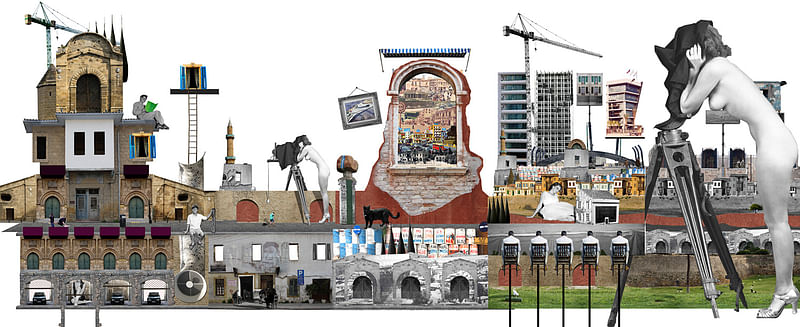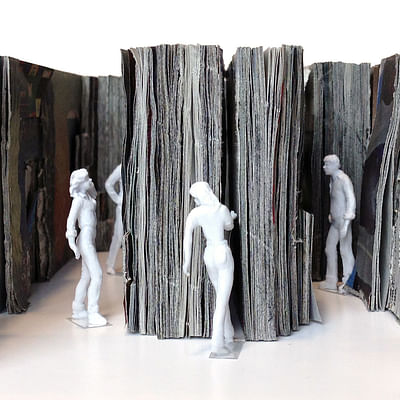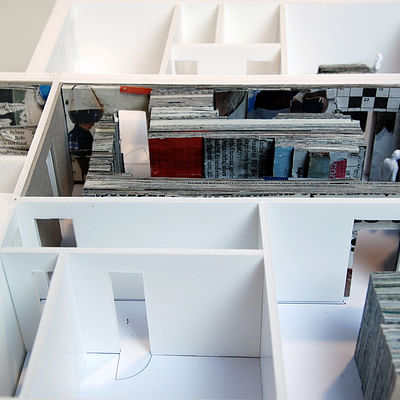The Cyprus 2014 Venice Biennale pavilion seeks the island's identity through architectural allegory
By Bustler Editors|
Wednesday, May 28, 2014

Related
The island of Cyprus took an allegorical approach with their 2014 Venice Biennale pavilion, titled the "Anatomy of the Wallpaper". Curated by architects Michael Hadjistyllis and Stefanos Roimpas, the wallpaper symbolizes the reconstruction of the island's complex national identity that has been affected by outside influences throughout its history.
To convey the country's multi-layered history, the pavilion will be covered in the timeless and appropriate medium of collages.
Check out some of the collages below.
"An endeavour towards a creative and retrospective reconstruction of island’s history, and specifically of its most important settlement, Nicosia. Cyprus has suffered throughout its history from invaders, conquerors and colonial powers, who left their marks indelibly on the form and structure of island’s settlements. Nicosia, a city of innumerable historical, social and cultural layers, was constructed in the same way as History, persistently by the victors, and according to their history. The Island’s capital forms a polyphony of diverse paradigms of architectural forms and cultures."

"The Story of Nicosia is presented in an allegory. In a literary device, with its immense power to illustrate multifaceted ideas and concepts, easily assimilated and tangible to its viewers. The city required a Wallpaper to stimulate its growth. Suspended right along its center, the Wallpaper gave it a striking imaginary background: a spectacle through the years, contributing to an unexpected Scenario. Gradually opposed along either side of the Wallpaper, the City’s two different parts, -developing different aspirations, abut an aggressive confrontation."

"A developing megalomania led both sides into a non-comprehensive settlement. Space became the battlefield of conflicting ideologies. A City’s alarmed awakening facing a blank Wallpaper, operated by a newly powered domain, giving an end to madness! A ‘horror vacui’ sense, declares the City’s worst economic catastrophe, followed by an identical one. Later on, when the Wallpaper’s layers are scraped away, or washed off, different landscapes are revealed. Events from various periods appear, while the City rediscovers its history. The Wallpaper, dividing its core, paradoxically provides space for contact - space, where collective memory was recorded, whilst the City can pursue its identity."

"When ideologies fade, undeniable truth and theories proved as false, identities are flattened and sacrificed to modernity, only then history reaches its pivotal point, and the Story can be reconstructed! Is the Wallpaper formatted into an immaterial and intangible element, to symbolize Nicosia’s divisions. A crossing line, dated from the medieval to the contemporary period, keeps mutating in time, absorbing the city’s history and collective memory. Later on, new physical layers are inserted on the Wallpaper, -its earliest form, immaterialized and intangible, is transfigured into a physical barrier-. It encompasses thickness, then it is formatted into Wall and ultimately into Space. By presenting a simplified narrative form, we aim to prioritize ideas."

"Part of the Wallpaper will be exposed on a real scale in a crucial form, whilst it is decorticating, and allowing viewer to reveal different stories of time - a gesture, that testifies the allegory’s historical validity.'
See more 2014 Venice Biennale pavilions here.
Click the thumbnails below to see more images.





Share
0 Comments
Comment as :